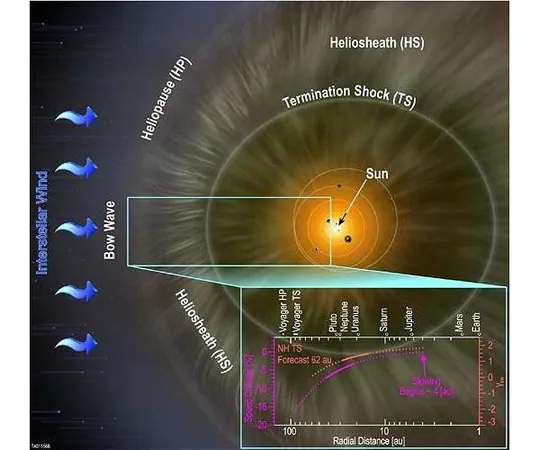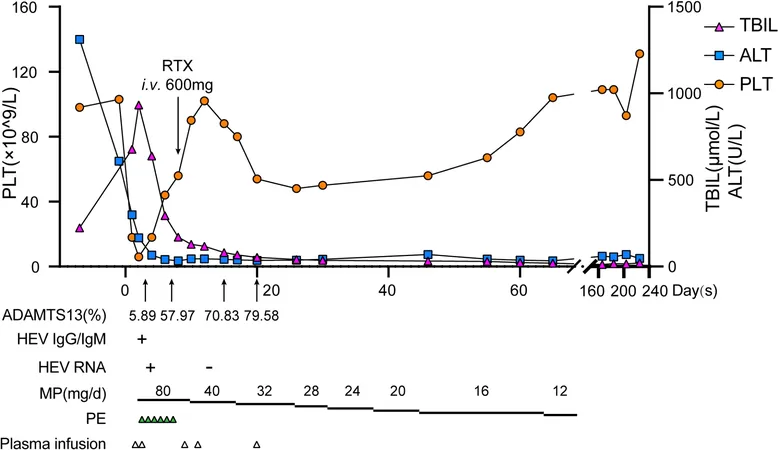
Groundbreaking Study Sheds Light on Solar Opacity Using Helioseismology
2025-01-29
Author: Rajesh
Introduction
In an exciting development for astrophysics, a team of researchers has made significant strides in understanding solar opacity—an essential factor in how energy is transported within the Sun—through the innovative technique of helioseismology. This method examines sound waves generated by acoustic oscillations in the Sun, allowing scientists to glean unprecedented insights into its inner workings.
Unlocking the Secrets of Solar Radiative Opacity
The implications of this research are profound. Solar radiative opacity dictates how matter interacts with radiation under extreme conditions, which is crucial for refining our models of solar structure and development. Through this study, researchers have validated previous results from esteemed laboratories like Sandia National Laboratories, while tackling some inconsistencies present in atomic physics models derived from Los Alamos National Laboratory and Ohio State University.
Helioseismic methods deployed by the ULiege team demonstrate their proficiency in accurately determining internal properties of the Sun. As Buldgen aptly noted, “It’s much like identifying a musical instrument's characteristics just by listening to its sound.” This level of precision allows for measurements of solar matter density that go beyond what traditional laboratory scales can offer.
Economic Implications and Real-World Applications
The value of helioseismic measurements extends beyond pure science; they offer a cost-effective alternative to resource-intensive laboratory experiments. For example, the Z Machine experiment, which aims to study solar-like conditions, necessitates extensive energy and financial commitment. Helioseismic data holds the promise of confirming experimental outcomes and informing future studies by elucidating the most relevant temperature and density regimes.
Furthermore, this research carries implications that stretch beyond our Sun. The refined stellar models arising from this work could inform our understanding of the age and mass of not only stars but also exoplanets, making the Sun a critical reference point for stellar evolution studies. With the upcoming PLATO satellite mission set to launch in 2026—designed to characterize solar-type stars and identify potential habitable planets—these findings have never been more timely.
Towards Cleaner Energy Solutions
In a broader context, the insights garnered from this study may have valuable repercussions for nuclear fusion research. Understanding solar conditions can provide a blueprint for developing fusion energy, which is widely viewed as a potential clean energy solution for the future.
Finally, the authors of this study emphasize an urgent need for refining atomic models to address the gaps between experimental outcomes and theoretical predictions. Advancing these models will doubtlessly transform our understanding of stellar processes and further elevate the position of the University of Liege as a frontrunner in astrophysical studies.
Conclusion
In conclusion, this groundbreaking research not only enhances our grasp of solar behavior but also sets the stage for future scientific endeavors, affirming the importance of helioseismology in unlocking the mysteries of the universe.


 Brasil (PT)
Brasil (PT)
 Canada (EN)
Canada (EN)
 Chile (ES)
Chile (ES)
 Česko (CS)
Česko (CS)
 대한민국 (KO)
대한민국 (KO)
 España (ES)
España (ES)
 France (FR)
France (FR)
 Hong Kong (EN)
Hong Kong (EN)
 Italia (IT)
Italia (IT)
 日本 (JA)
日本 (JA)
 Magyarország (HU)
Magyarország (HU)
 Norge (NO)
Norge (NO)
 Polska (PL)
Polska (PL)
 Schweiz (DE)
Schweiz (DE)
 Singapore (EN)
Singapore (EN)
 Sverige (SV)
Sverige (SV)
 Suomi (FI)
Suomi (FI)
 Türkiye (TR)
Türkiye (TR)